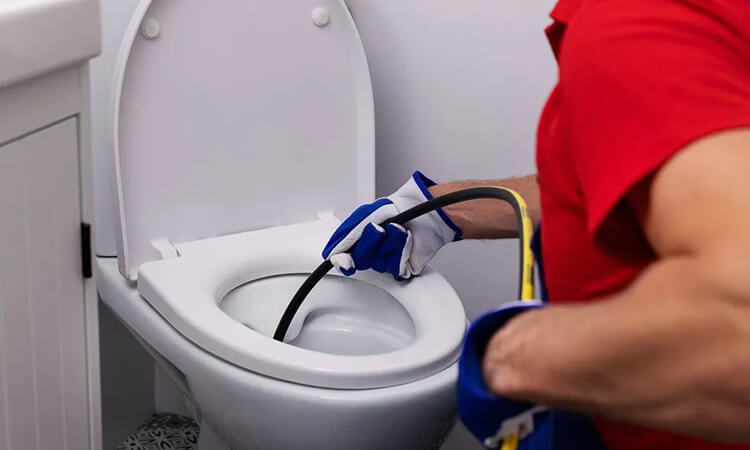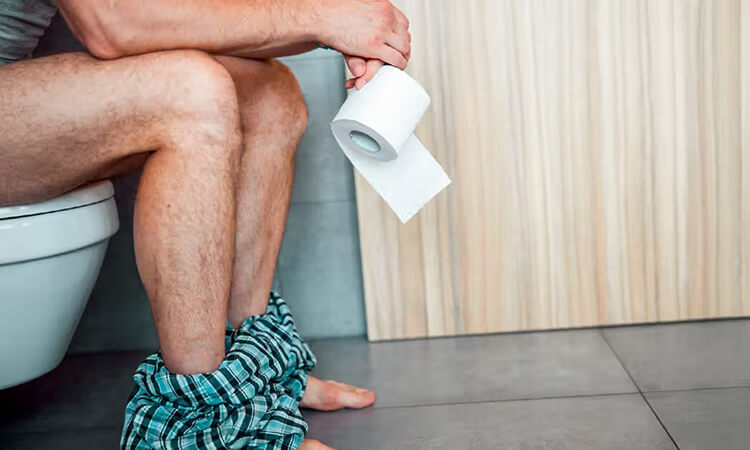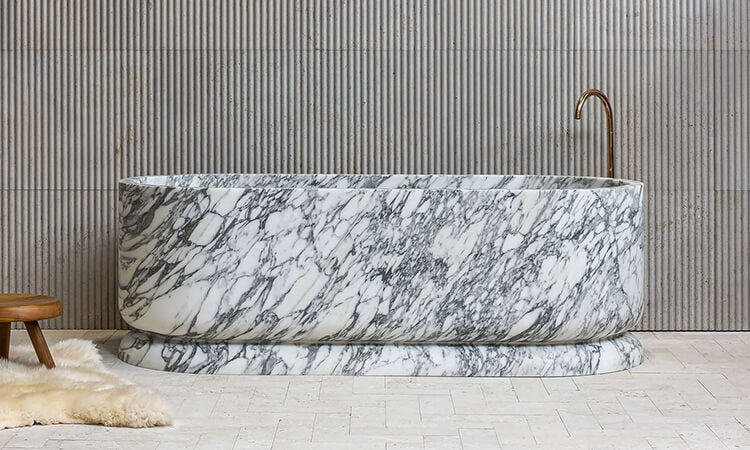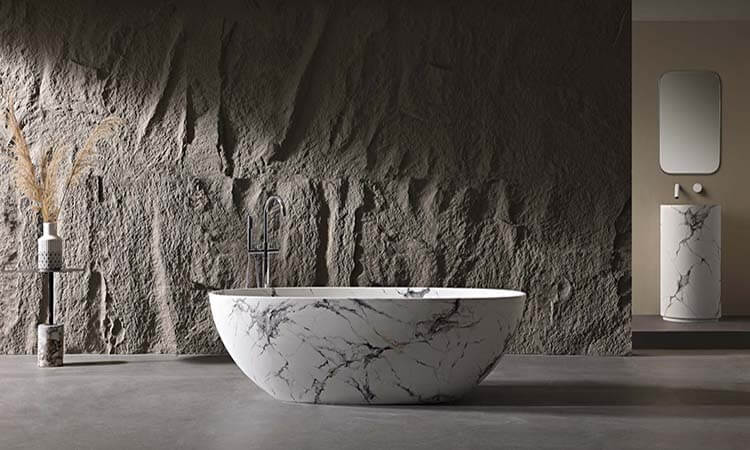A clogged toilet can bring your entire day to a halt. It usually happens at the worst moment — guests are over, you’re rushing out the door, or it’s late at night. While calling a plumber is always an option, a single visit can easily cost anywhere from $50 to $200. The good news? Most common toilet clogs can be fixed quickly with simple tools you already have at home.
In this guide, we’ll break down how to unclog a toilet the right way — starting with how to identify the type of clog, the best methods and tools to clear it, and smart prevention tips to avoid future blockages. Whether this is your first time dealing with a clog or you’re just tired of repeat issues, you’ll learn practical fixes that save money, prevent mess, and restore your bathroom to normal fast.
Method 1: Remove Visible Objects by Hand

Sometimes a toilet clog isn’t caused by waste or paper — it’s a small item stuck near the drain. Kids’ toys, soap bars, dental floss picks, or even too much toilet paper can float close to the opening where you can safely grab it. If that’s the case, the simplest fix is to remove it by hand — just make sure you protect yourself first.
What you’ll need
- Thick disposable gloves or rubber cleaning gloves
- A plastic bag for the removed item
- Paper towels for cleanup
Step-by-step:
- Check the Water Level: If the bowl is very full, remove some water with a cup so it doesn’t spill over. Leave enough water so you can still see the clog clearly.
- Gear Up: Put on your gloves and carefully reach into the bowl. Move slowly so you don’t push the item further down the drain.
- Grab and Lift: Gently pull the object out — avoid jerking or twisting to prevent it from breaking apart.
- Dispose Properly: Drop the item into a plastic bag, seal it, and throw it away.
- Test the Toilet: Flush once to confirm the clog is gone. If the water still drains slowly, move on to Method 2 and try a plunger.
Method 2: Use a Plunger

When most people think about how to unclog a toilet, a plunger is the first tool that comes to mind — and for good reason. A quality plunger creates strong suction and pressure to break up or dislodge the clog without harming the toilet.
What you’ll need
- A sturdy rubber plunger (preferably one with a flange for a better seal)
- Enough water in the bowl to cover at least half of the plunger cup
Step-by-step:
- Create a Tight Seal: Place the plunger directly over the drain opening. Press down until the rim of the rubber cup forms a complete seal with the porcelain. If the water level is too low, add water — a good seal needs water, not air.
- Pressure and Release: Grip the handle with both hands. Push down firmly and hold for 2–3 seconds to build pressure. Then pull up quickly while keeping the seal intact.
- Repeat with Control: Do this 3–5 times. Watch the water level — if it begins to slowly drop, you’re on the right track. Do a couple more pumps, then try a flush to test results.
Avoid these common mistakes:
- Don’t tilt the plunger — it weakens the seal and reduces pressure.
- Don’t plunge on dry air — always ensure there’s enough water covering the cup.
- If toilet paper or debris comes up, clean it off before plunging again.
Pro tip: Slow and steady beats fast and frantic. Fast, shallow plunges don’t create enough force to move the clog.
Method 3: Hot Water + Dish Soap

If your toilet is clogged with too much toilet paper or hardened waste, you don’t always need chemicals. A simple mixture of hot water and dish soap can soften and lubricate the blockage — making it much easier for gravity (and a plunger) to finish the job.
What you’ll need
- Hot water: around 140–160°F (hot but not boiling — boiling water can crack the porcelain)
- Dish soap: 2–3 tablespoons
- A cup or pitcher for pouring
Step-by-step:
- Make Space: If the toilet bowl is too full, remove some water first so it won’t overflow.
- Add Dish Soap: Squeeze 2–3 tablespoons into the bowl. It helps break down oils and reduces friction.
- Pour Hot Water Slowly: Aim the water along the sides of the bowl to avoid splashing. Fill up to about one-third of the bowl.
- Let It Work: Wait 10–15 minutes. For tougher clogs, give it up to 20 minutes.
- Test and Plunge: If the water level goes down, try flushing. If not, grab the plunger again — the clog should be much softer now.
Good to know: This method won’t help if the clog is a solid object like a toy or hair clip. And if you’re using a portable plastic toilet, keep the water temperature below 120°F to avoid warping.
Method 4: Use a Manual Drain Snake

If plunging and hot water + dish soap haven’t fixed the problem, the blockage might be stuck farther down the drain. This is when a manual drain snake — also called a hand auger — becomes your best tool. Its flexible metal cable can reach deep inside the pipe to break apart, hook, or pull out whatever is causing the clog.
What you’ll need
- Manual drain snake: 10–16 ft long (a hook or spiral tip works best)
- Gloves
- Paper towels and a trash bag for cleanup
Step-by-step:
- Insert the Cable: Guide the snake’s tip into the toilet drain, keeping the cable as straight as possible while pushing forward.
- Rotate While Advancing: Turn the handle clockwise as you feed the cable. The rotation helps it navigate bends and prevents kinks.
- Work Through the Blockage: Once you feel resistance, stop pushing hard. Keep turning the handle while gently applying pressure — let the tool do the work.
- Pull Back Slowly: When resistance decreases or you hear gurgling, rotate the handle counterclockwise and slowly retract the cable to avoid dropping debris back down.
- Clean and Test: Remove any paper, hair, or objects stuck to the tip. Bag the debris, rinse the cable, and then flush to check the flow. If needed, repeat 1–2 more times, adjusting your angle slightly to reach different pipe bends.
Safety caution: Don’t force the auger if it jams hard against a pipe bend — you could damage the toilet or the cable. Gently reposition and try again.
After You’ve Unclogged the Toilet
Clearing the clog is only part of the job — don’t assume everything is done once the water drains. Residual waste and bacteria can linger, causing odors or even minor contamination. Follow these steps to make sure your toilet and tools are fully clean.
1. Flush and rinse thoroughly
- Flush the toilet 2–3 times to make sure all debris has cleared.
- If you notice residue on the bowl walls, scrub gently with a toilet brush and a mild, neutral cleaner. Avoid harsh acids or bleach that could damage the porcelain.
- Finish with one last flush to rinse away any remaining soap or loosened debris.
2. Clean your tools
- Wash plungers, augers, and other reusable tools with hot water and dish soap.
- Let plungers air-dry in a ventilated area, and dry augers before storing to prevent rust.
- Seal and discard disposable gloves and any plastic bags used to contain debris.
Prevention Is Better Than Cure

Once you’ve cleared a clog, the best strategy is to prevent the next one. A few simple habits can drastically reduce the risk of toilet blockages and keep your bathroom running smoothly.
Only flush what belongs
- Flush human waste and dissolvable toilet paper only.
- Never flush wet wipes, sanitary pads, diapers, hair, plastics, or food scraps — especially hard items like bones or fruit peels.
Use toilet paper wisely
- Tear paper into small pieces and flush in 2–3 batches instead of all at once. This helps prevent soft clogs before they become a bigger problem.
Perform regular pipe maintenance
- Weekly: Pour hot water and dish soap down the bowl, let it sit 10 minutes, then flush to soften residue.
- Annually: If your toilet is older than 5 years, run a drain snake through the pipes to remove buildup and prevent deep clogs.
Avoid accidental drops
- Keep toothbrushes, combs, soap, and small items away from the rim or seat.
- Watch young children and keep bath toys out of the bathroom when not in use.
Monitor flush performance
- Weak flushes (thin stream, slow drainage) can allow waste to accumulate.
- Check the fill valve and flush valve inside the tank, or call a plumber to inspect your pipes. Proper flush power prevents most household clogs.
When to Call a Professional
Most household toilet clogs can be handled with the methods we’ve covered. However, some situations are better left to a licensed plumber. Trying to fix them yourself could make things worse or even damage your pipes.
Sharp or large objects
- Items like toothbrushes, scissors, or big toys can get pushed deeper or damage plumbing if forced.
- Professionals have specialized tools to safely extract these objects without harming your toilet.
Repeated clogs
- If your toilet clogs 2–3 times in a week, it could indicate stubborn buildup, a collapsed pipe, or another structural issue.
- A plumber can inspect with a pipe camera, identify the root cause, and prevent future problems.
Water leaks during your attempts
- Leaks at the toilet base or around seals often signal a damaged wax ring or loose connections.
- Stop working immediately and call a professional to prevent worsening water damage.
Ending
In most households, a clogged toilet is more of an inconvenience than a disaster. With the right approach — correctly assessing the clog and choosing the appropriate tool — you can usually clear it yourself and save $50–$200 in service fees.
Even better, adopting good toilet habits can dramatically reduce the chance of future clogs. Prevention is always easier than cleanup.
Next time your toilet backs up, don’t panic. Follow this guide step by step, and you’ll likely have it flowing again in no time. And remember, if multiple methods fail or the blockage seems severe, calling a professional is the safest choice.







